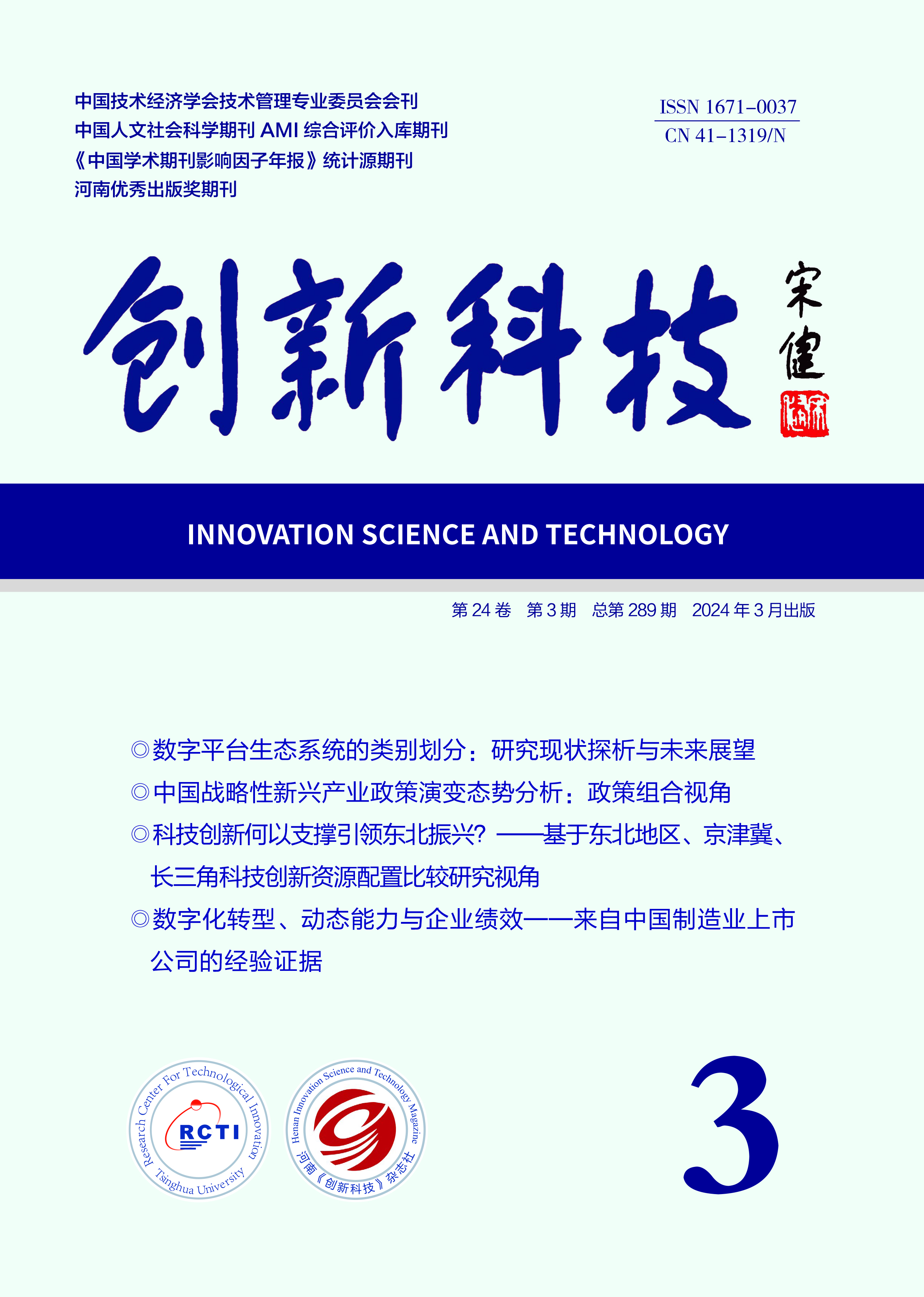INNOVATION SCIENCE AND TECHNOLOGY
Quick Search

All publication are peer-review
Peer review will take the from of double-blind review Judge objectively and impartially
There is no conflict of interest for the reviewer
Review articles shall be kept strictly confidential prior to publication
Industrial Technology Progress
Analysis of Coupling Coordination Degree and Obstacle Factors Between Scientific and Technological Innovation and Modern Ser⁃ vice Industry Development
Chen Lei
(School of Humanities and Law, Northeastern University, Shenyang 110169, China)
Abstract: Promoting the coordinated development of scientific and technological innovation and the modern service industry is an inherent requirement for promoting the integrated develop⁃ ment of scientific and technological innovation and industrial innovation. It is of great practical significance to explore the coupling coordination relationship between scientific and technologi⁃ cal innovation and the modern service industry and its influencing factors. Based on the coupling coordination theory, this paper deeply analyzes the coupling coordination relationship between scientific and technological innovation and modern service industry development. Taking the time series data from 31 provinces in China's mainland from 2017 to 2022 as a research sample, it employs the entropy method and the coupling coordination degree model to empirically measure the coupling coordination degree between the scientific and technological innovation system and the modern service industry development system. Additionally, it uses the obstacle degree diagno⁃ sis model to analyze the obstacle factors affecting the coupling coordination degree of the two sys⁃ tems. Research found: scientific and technological innovation and the development of modern ser⁃ vice industry are two independent systems with a strong coupling coordination relationship; dur⁃ ing the research period, a high level of coupling was observed between China's scientific and tech⁃ nological innovation system and the development system of modern service industry; the coupling coordination degree between the two systems shows an increasing trend year by year, but overall it is still in a low level of coordination; the degree of coupling coordination among provinces varies greatly, with regional levels exhibiting an east-high, west-low pattern, progressively decreasing from the eastern coast to the central, northeastern, and western regions; scientific and technologi⁃ cal innovation poses the greatest obstacle to the coupling coordination of the two systems. Key fac⁃ tors hindering this relationship include the contract value in the technology market, the number of authorized domestic patent applications, the full-time equivalent of R&D personnel, the internal expenditure of R&D funds, and the number of Chinese scientific and technological papers in⁃ cluded in major foreign search tools. Based on the above research conclusions, the following tar⁃ geted policy suggestions are put forward: first, accelerate the transfer and diffusion of technologi⁃ cal achievements to modern service industries; second, strengthen research on basic theories and key common technologies of modern service industries; and third, increase the supply of factors for the development of modern service industries.
Key words: scientific and technological innovation; modern service industry; coupling coordi⁃ nation degree; knowledge production; scene application; model innovation; key generic technol⁃ ogy; the commercialization of research findings